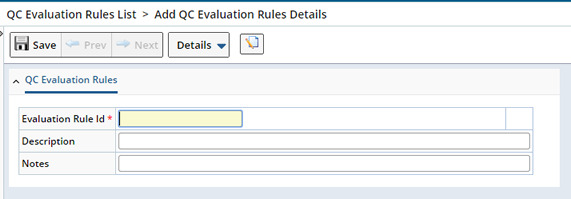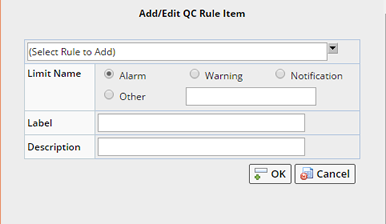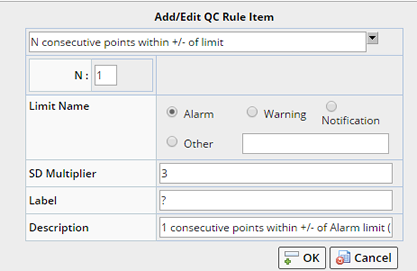Introduction |
|
|
QC Rules let you define the statistical process control method to apply when evaluating QC Batches. Define the method using Western Electric Company (WECO) Rules and the Westgard Multi-Rules Procedure.
A QC Rule is a directive used during the evaluation of the QC Samples of a QCBatch. These directives can determine when a QCBatch is trending out of control and show when an individual datapoint is outside of a limit range or exhibits a trending tendency.
When the QC Rule defined here is included on a QC Method, these rules are applied to the QC Batch Sample data.
Add a New QC Rule |
|
|
To create a new QC Rule navigate to the AQC → QC Rules tramstop. The QC Evaluation Rules List page displays.
|
|
Click "Add" to add a new rule or select an existing rule and click "Edit" to make changes.
Identify the Rule |
Identify, and provide additional information about the rule.
|
|
| Field | Description |
| Evaluation Rule Id | Identifier of the QC Rule. |
| Description | Textual description. |
| Notes | Additional information about the QC Method. |
Define the Rules |
After saving, the Rule detail displays (shown below with rules already added).
|
|
To define Rules and their criteria, click "Add".




